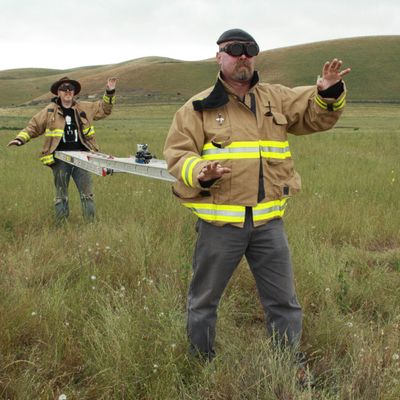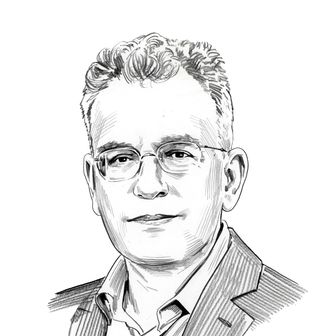
This piece originally ran in October 2015. With the show having ended its final season this past weekend, we are posting the article again.
After 14 seasons, MythBusters — Discovery’s pop-science engineering-fest, devoted to testing whether various widely held beliefs about the physical world are bogus — has confirmed that the show will go off the air in an explosive fireball after next season. Ratings have dipped, and even fans acknowledged the show was losing steam. Still, it’s news that makes you think about the cultural shift since 2001, and how the show’s hosts Adam Savage and Jamie Hyneman took part in that change. Over the course of nearly 3,000 myths, Savage and Hyneman (joined for much of the run by a trio of hosts doing secondary myths) can be credited with reviving a particular role: that of the public advocate for science and engineering.
When MythBusters went on the air, only Bill Nye the Science Guy was out there, working on a much smaller scale, with (quite good) lab-bench demos on talk shows and the like. Savage and Hyneman simply made bigger-and-better television: They were builders as much as they were explainers, and tested things like odd historical claims and implausible movie effects. Some historian claims that cannonballs were once made out of ice? Sure, we’ll make some and fire them off. Can an automobile’s ejection seat, like the one in James Bond’s Aston Martin, turn a car upright after it’s been flipped on its roof? Hell, let’s install one and try it out. Could a sunken ship really be raised by filling it with ping-pong balls? Call a sporting-goods supplier!
The easy complaint about the show was that it relied too much on story lines involving explosions and gunfire, and it’s a legitimate knock. But experimental science often involves visceral experiences — power tools, toxic chemicals, risk of injury — and so does the testable lore on which the show depended. It was a positive, fun version of public science, with a dose of can-do optimism provided, in particular, by Savage’s buoyant TV personality and Hyneman’s counterbalancing grumpiness. (The younger, cuter “B-team” cast members also made great TV, particularly Kari Byron, whose gameness for anything and outstanding construction skills were only occasionally overshadowed by her sometimes frustrating role, for most of the run, as the only woman on the show.) Even Barack Obama, who grasped that the series was a boon for science education, made a guest appearance on the show.
More than that, though, MythBusters revealed something striking: a national hunger for data-driven authority, and the methodology that delivers it. One of the great things about the show has been its transparency about method. At least outwardly, and within the limits of a reality-TV show, the experiments carried out by Savage and Hyneman were pretty transparent and fairly rigorous. Their degree of experimental precision would perhaps not clear the bar in a Ph.D. thesis defense at MIT, but as a first approximation, or even a second or third one, it was often remarkably thought-out and solid. Their show was the Wikipedia of science labs: accessible, cleanly presented, at least broadly correct. Turn your nose up at Wikipedia if you will — but it’s vastly more accurate than it used to be, and I bet you’ve looked something up there, and believed it, in the past week. The show even had an ad hoc peer-review process: If viewers pointed out a legitimate criticism of their methodology, the hosts would cop to it so on a subsequent episode and show a revised test.
MythBusters was early to the boom in public science, and I daresay it may even have helped it along. Since the show premiered, Neil deGrasse Tyson has revived Carl Sagan’s Cosmos, and also stepped into Sagan’s old role as the nation’s astrophysicist-in-chief. Nate Silver, by deploying sophisticated statistical modeling of poll results, called the 2008 and 2012 elections with precision, and in the days before the latter election, he was pulling in a third of the web traffic of the New York Times. He’s since gone out on his own at FiveThirtyEight.com, and gained competitors in Ezra Klein’s Vox.com, which does its own version of data journalism, and the Times’s own The Upshot. The building-and-experimenting subculture of Maker Faire and Make magazine has also roared into existence since then. It turns out that we really want people who can build and fix things, and who aren’t afraid to show their work. We also want people to test beliefs against data, especially as various truthinesses (anti–global warming, anti-vaccine) threaten the scientific consensus and, perhaps, life as we know it. We as a culture are growing weary of received wisdom and bullshit, and a good skeptical test is the best defense. If it comes with a big explosion at the end, well, that just makes it cooler. Here’s to the show’s fiery Viking funeral, and years of reruns.


